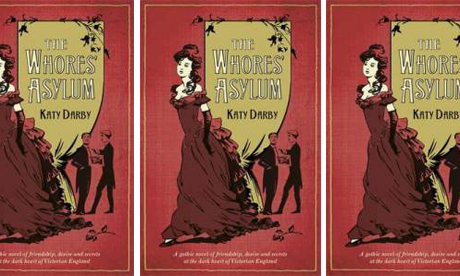The Whores’ Asylum – review

Haunting, romantic, gothic: The Whores' Asylum
The fine line between virtue and vice is a staple of narrative fiction, and in Victorian Britain the passage from gentility to depravity evoked both dread and fascination.
A light and subtly ironic meditation on these themes, The Whores’ Asylum is the début novel by Hackney-based author Katy Darby. Set largely in the sordid back streets of nineteenth-century Oxford, this gothic pot-boiler recounts the story of the ill-fated Diana and the various men with whom she becomes entangled.
At the centre of the tale are the classic romantic themes of lost innocence and tragic love. Love surfaces in all its various guides: as passion, friendship, devotion, and disease. Disease also becomes a theme in its own right, manifesting as physical ailment, mental illness, and moral degradation. With love and disease entwined in a grotesque embrace, the result is of course foreordained.
If the novel’s unwinding is predictable from the narrative norms of the genre it inhabits, it is none the less appetising. The story is quite convincingly narrated in nineteenth-century prose with period literary devices to match. Multiplying the classic novelistic conceit of the found document, Darby creates a patchwork of nested stories within letters within memoires. Each account sheds light on a part of the main character’s sorry tale.
The noble religious scholar Edward Fraser is followed by his friend and temperamental opposite, Dr Stephen Chapman, before Diana herself serves a stint as narrator. Interspersed are accounts by the dissolute cripple Hereward, the fiery painter Valentini and the evil Kester.
The novel has a playful tongue-in-cheek quality to it, but it is also a true page-turner. If the symbolism is at times a trifle laboured, the narrative is certainly entertaining and crafted in a style that only occasionally bears the marks of a twentieth-century keyboard.
The Whores’ Asylum is published by Penguin, ISBN: 978-1-905-49080-6. RRP: £12.99
